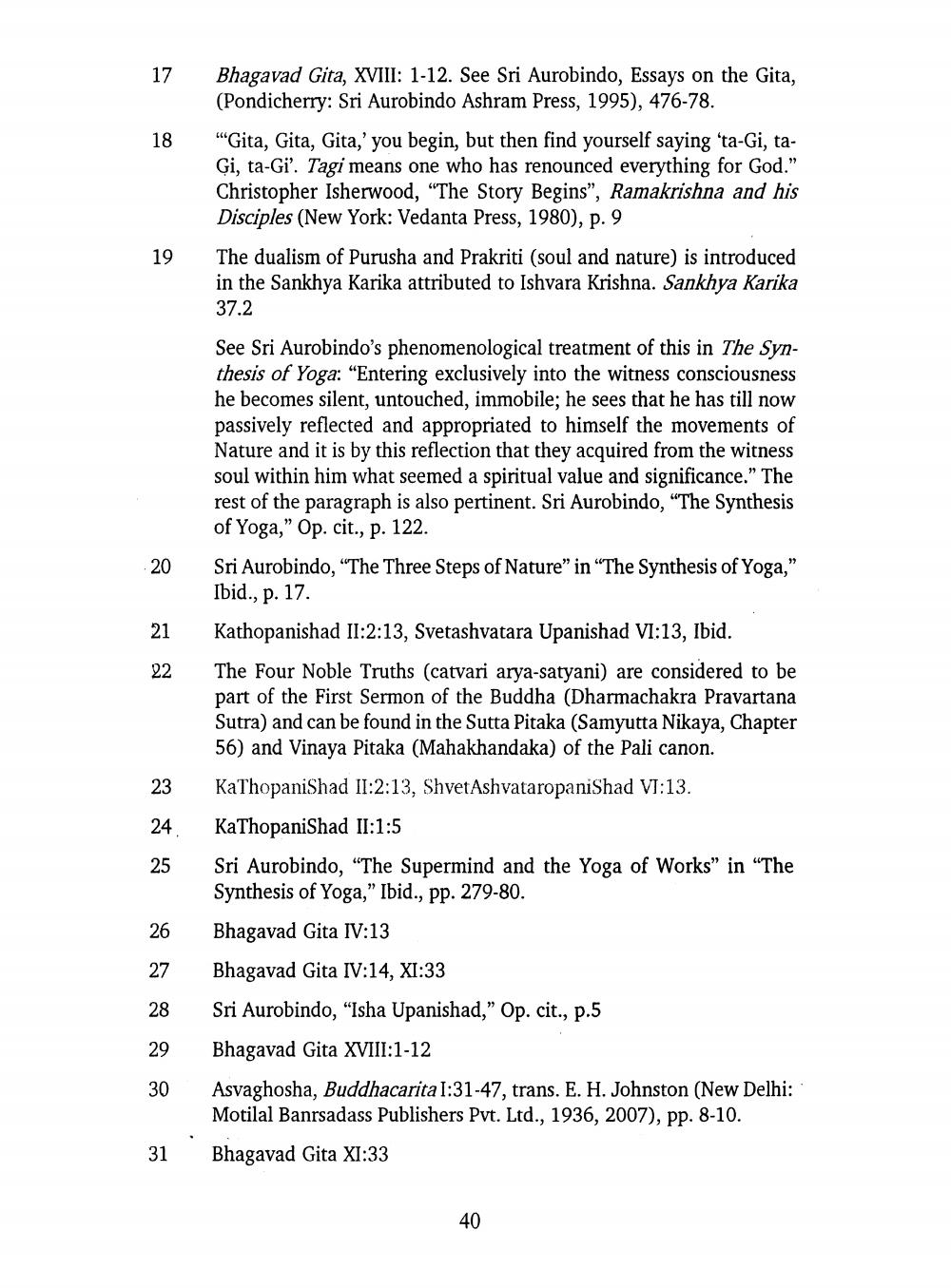________________
17
Bhagavad Gita, XVIII: 1-12. See Sri Aurobindo, Essays on the Gita, (Pondicherry: Sri Aurobindo Ashram Press, 1995), 476-78. ""Gita, Gita, Gita,' you begin, but then find yourself saying 'ta-Gi, taGi, ta-Gi’. Tagi means one who has renounced everything for God." Christopher Isherwood, "The Story Begins", Ramakrishna and his Disciples (New York: Vedanta Press, 1980), p. 9
19
The dualism of Purusha and Prakriti (soul and nature) is introduced in the Sankhya Karika attributed to Ishvara Krishna. Sankhya Karika 37.2
See Sri Aurobindo's phenomenological treatment of this in The Synthesis of Yoga: "Entering exclusively into the witness consciousness he becomes silent, untouched, immobile; he sees that he has till now passively reflected and appropriated to himself the movements of Nature and it is by this reflection that they acquired from the witness soul within him what seemed a spiritual value and significance." The rest of the paragraph is also pertinent. Sri Aurobindo, “The Synthesis of Yoga," Op. cit., p. 122. Sri Aurobindo, "The Three Steps of Nature" in "The Synthesis of Yoga," Ibid., p. 17. Kathopanishad II:2:13, Svetashvatara Upanishad VI:13, Ibid.
The Four Noble Truths (catvari arya-satyani) are considered to be part of the First Sermon of the Buddha (Dharmachakra Pravartana Sutra) and can be found in the Sutta Pitaka (Samyutta Nikaya, Chapter 56) and Vinaya Pitaka (Mahakhandaka) of the Pali canon.
Kathopanishad II:2:13, ShvetAshvataropanishad VI:13.
Kathopanishad II:1:5
Sri Aurobindo, "The Supermind and the Yoga of Works" in "The Synthesis of Yoga,” Ibid., pp. 279-80. Bhagavad Gita IV:13
Bhagavad Gita IV:14, XI:33
Sri Aurobindo, “Isha Upanishad,” Op. cit., p.5 Bhagavad Gita XVIII:1-12
Asvaghosha, Buddhacarital:31-47, trans. E. H. Johnston (New Delhi: Motilal Banrsadass Publishers Pvt. Ltd., 1936, 2007), pp. 8-10. Bhagavad Gita XI:33




